Studio living demands furniture that’s both stylish and supremely functional. By choosing pieces that serve multiple purposes, optimize vertical space, and adapt to changing needs, you can turn any compact area into a comfortable, versatile home. From convertible beds and modular shelving to hidden storage ottomans and fold-down desks, these 20 studio furniture ideas blend practicality with design flair. Whether you’re working with a blank canvas or a well-loved apartment, each suggestion focuses on maximizing space, enhancing comfort, and reflecting your personal style—ensuring your studio feels spacious, organized, and uniquely yours.
1. Daybed for Dual Purpose
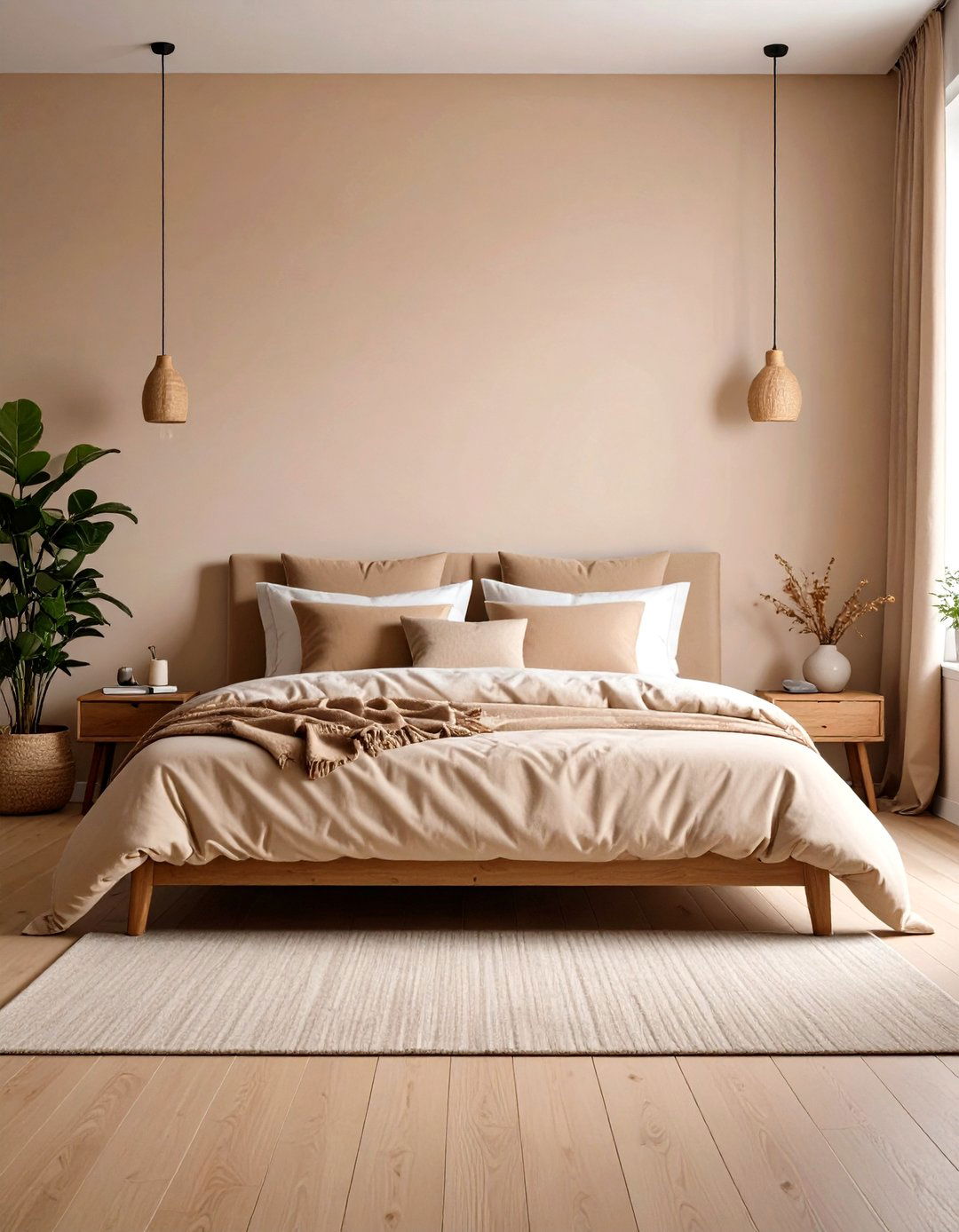
A daybed offers the perfect blend of seating and sleeping space, acting as a chic sofa by day and a comfortable bed by night—ideal for entertaining guests or lounging after work. Many modern daybeds come with built-in trundle options, adding an extra sleeping surface without permanently sacrificing floor space. Upholster yours in a neutral fabric to seamlessly coordinate with changing decor, or choose a bold pattern to make it the room’s focal point. Positioned against a wall, a daybed frees up central floor area for walking paths and additional furniture placement.
2. Murphy Bed with Fold-Down Desk
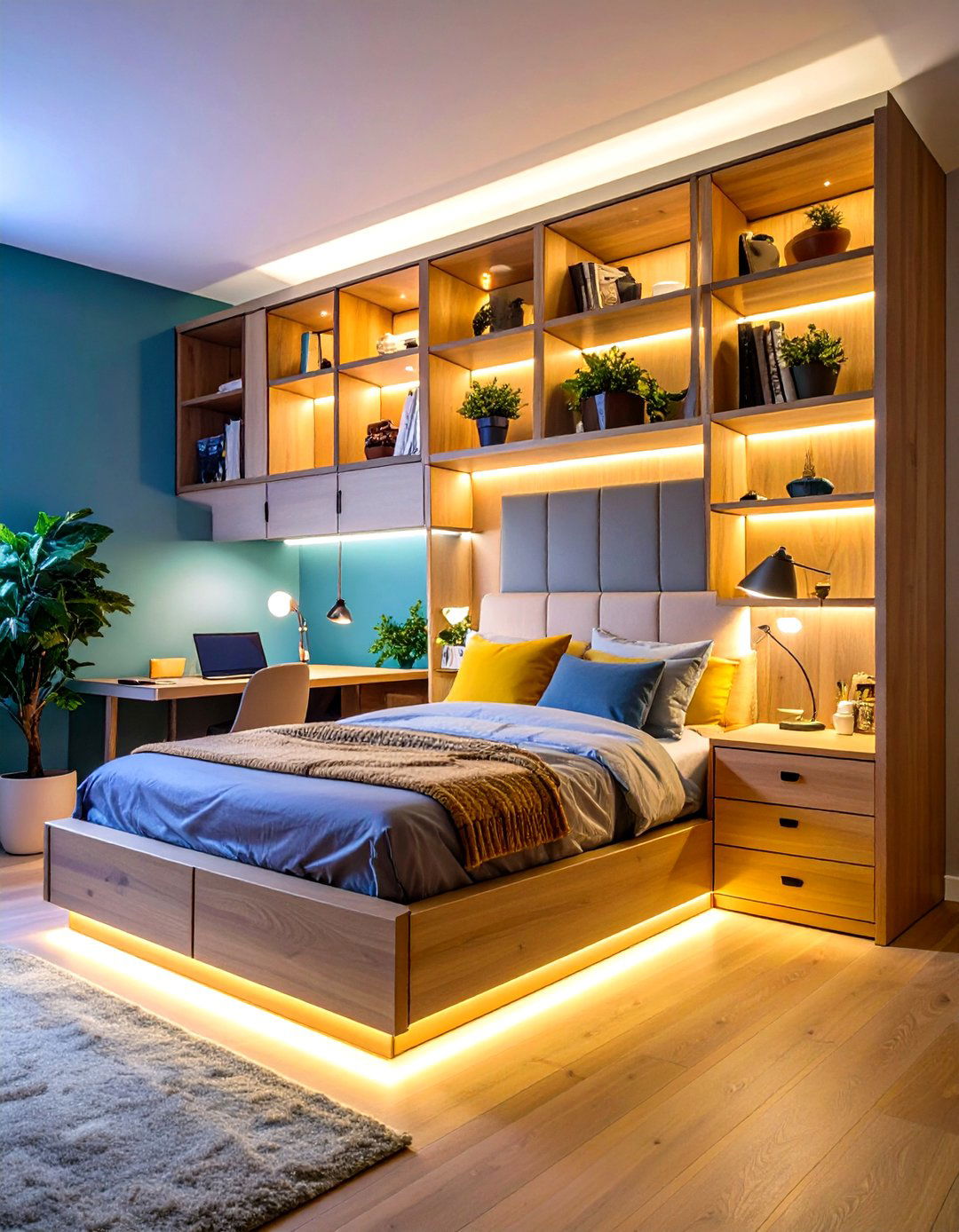
A Murphy bed that pivots up to reveal a fold-down desk transforms a sleeping area into a home office in seconds. This clever solution allows you to maintain a dedicated workspace without sacrificing square footage—simply fold the desk away when it’s time to rest. Many contemporary Murphy bed systems include ambient lighting and shelving integrated into the cabinet frame, providing both function and style. Install in a corner or against a less-used wall to preserve the main living area’s openness and flow.
3. Loft Bed with Workspace Below
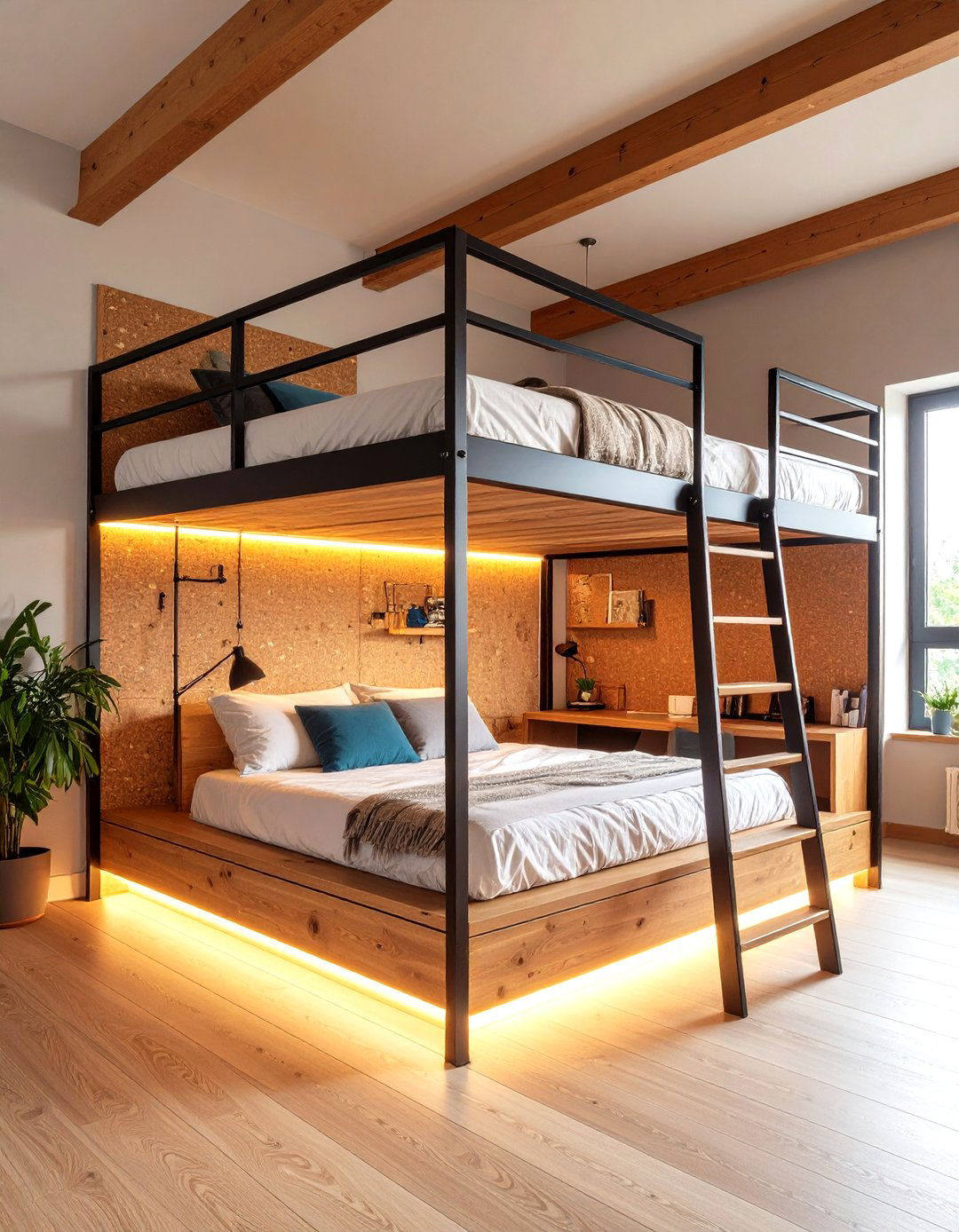
Elevating your bed creates valuable real estate underneath that can be transformed into a desk area, reading nook, or mini living room. Loft beds work especially well in studios with high ceilings, turning vertical space into productive zones. Opt for a sturdy metal or reinforced wood frame to support both mattress and the furnishings below safely. Add pegboard or corkboard panels around the desk for organization, and string LED lights underneath the bed to illuminate the workspace without overcrowding the floor.
4. Modular Shelving System

Flexible, modular shelving units allow you to reconfigure storage as your needs evolve—ideal for books, decor, and media. Systems like grid-based or slotted-wall shelves can adapt to holding plants one month and art supplies the next, without additional hardware. Choose a design in a minimalist finish, such as matte black metal or natural wood, to complement both industrial and Scandinavian interiors. By anchoring shelves to the wall, you free up floor space for seating or activity zones, keeping the studio feeling airy and uncluttered.
5. Fold-Down Dining Table
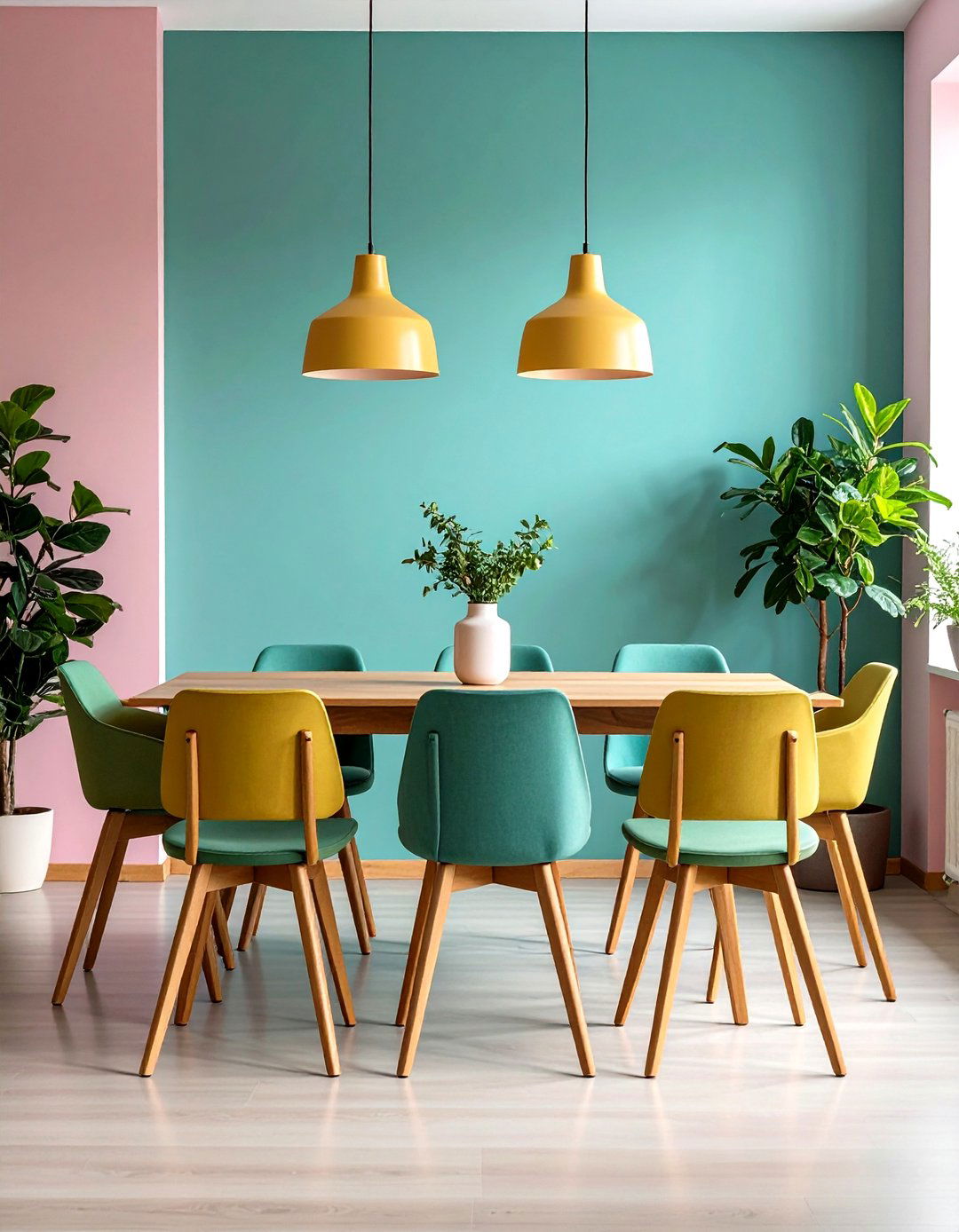
A wall-mounted fold-down dining table provides a place for meals, work, or crafting, then tucks away seamlessly when not in use. Look for versions with integrated drop-leaf extensions that can double the surface when hosting friends, yet occupy mere inches of wall space. Pair it with stackable or folding chairs that stow neatly against another wall or inside a closet. This solution maintains flexibility in your studio layout, ensuring every inch contributes to both form and function.
6. Nesting Side Tables
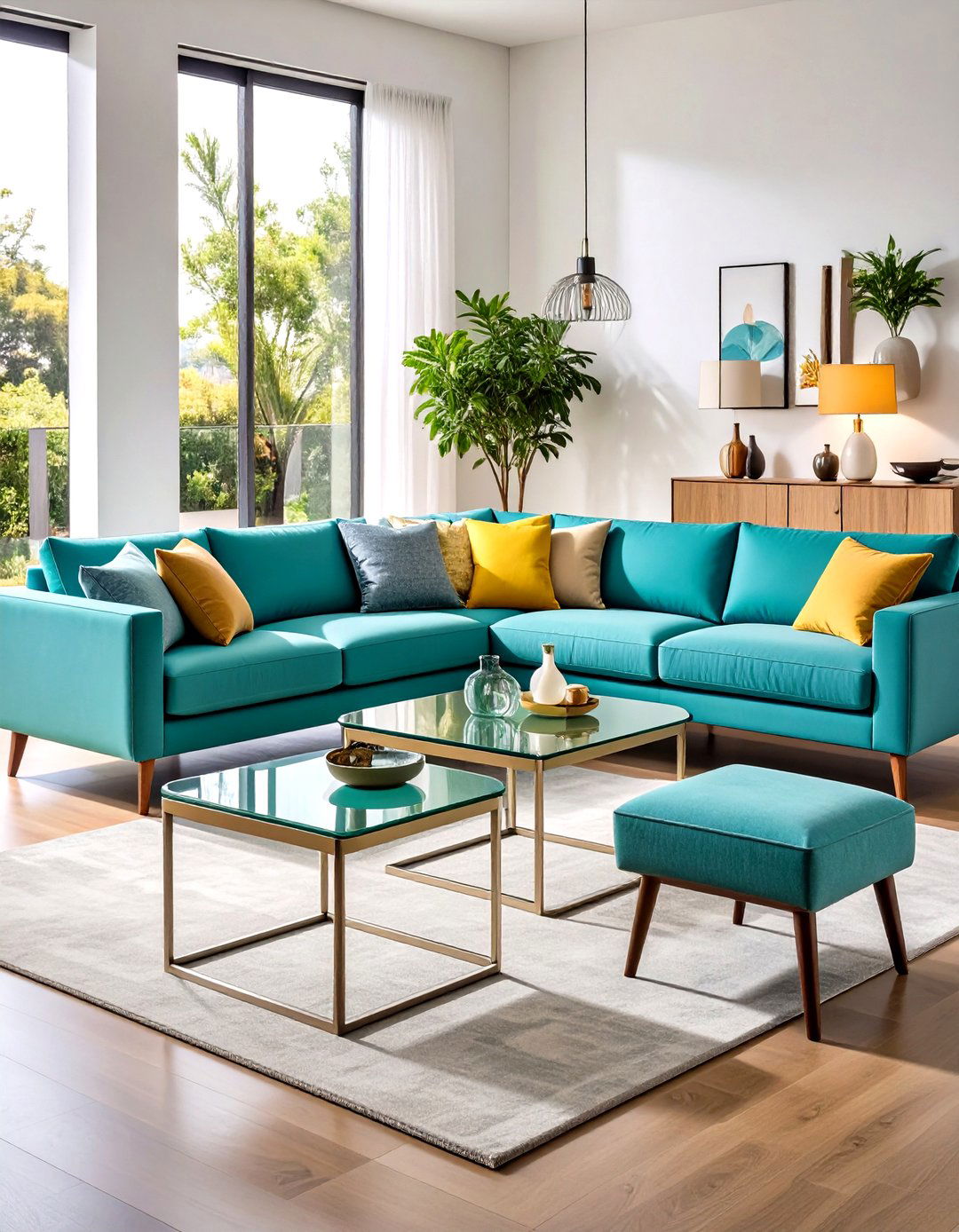
Nesting tables are champions of versatility: use them individually around the room or slide them together for a larger surface. When hosting, pull out the smaller tables to serve drinks or snacks; when alone, nest them out of sight to reduce clutter. Opt for materials like tempered glass and metal frames for a light, airy appearance that won’t visually weigh down the space. Position near a sofa or bed as a makeshift nightstand or coffee table, adapting to your daily needs.
7. Rolling Kitchen Island

A compact kitchen island on casters offers extra prep space, storage, and a breakfast bar—and can be rolled away when not in use. Many designs include open shelves or drawers for pots, pans, and pantry essentials, keeping everything within reach while cooking. Lockable wheels ensure stability during meal prep, and a butcher-block top adds warmth and durability. In open-plan studios, the island can also define the kitchen zone, visually separating it from living and sleeping areas without erecting walls.
8. Low-Profile, Mid-Century Modern Pieces
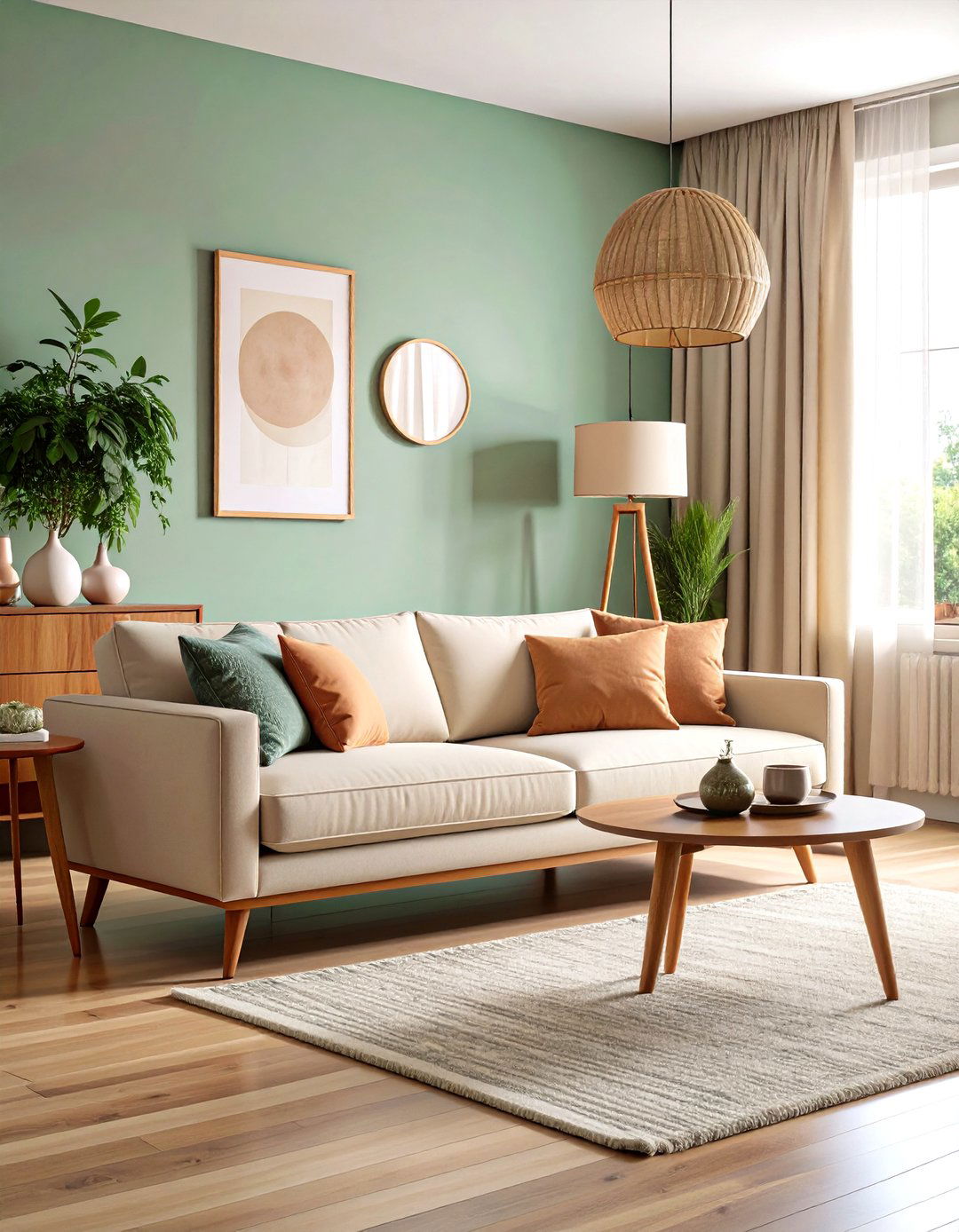
Pieces with slim, tapered legs and minimal ornamentation create the illusion of more floor space by allowing light and sightlines beneath them. Mid-century modern sofas, credenzas, and coffee tables with this aesthetic feel both timeless and spacious. Choose upholstery in light or neutral tones to further expand the visual footprint of your furniture. This approach not only maximizes the perceived size of your studio but also infuses it with enduring style.
9. Hidden Storage Ottoman

An ottoman with a lift-top offers a cozy footrest, extra seating, and concealed storage all in one. Use the interior to stow blankets, magazines, or board games—keeping clutter out of sight while maintaining easy access. Upholstery choices range from durable performance fabrics to plush velvet, ensuring the piece complements any decor scheme. Positioned at the foot of a sofa or beside the bed, it anchors the room and delivers multifunctional utility.
10. Room-Dividing Bookcase
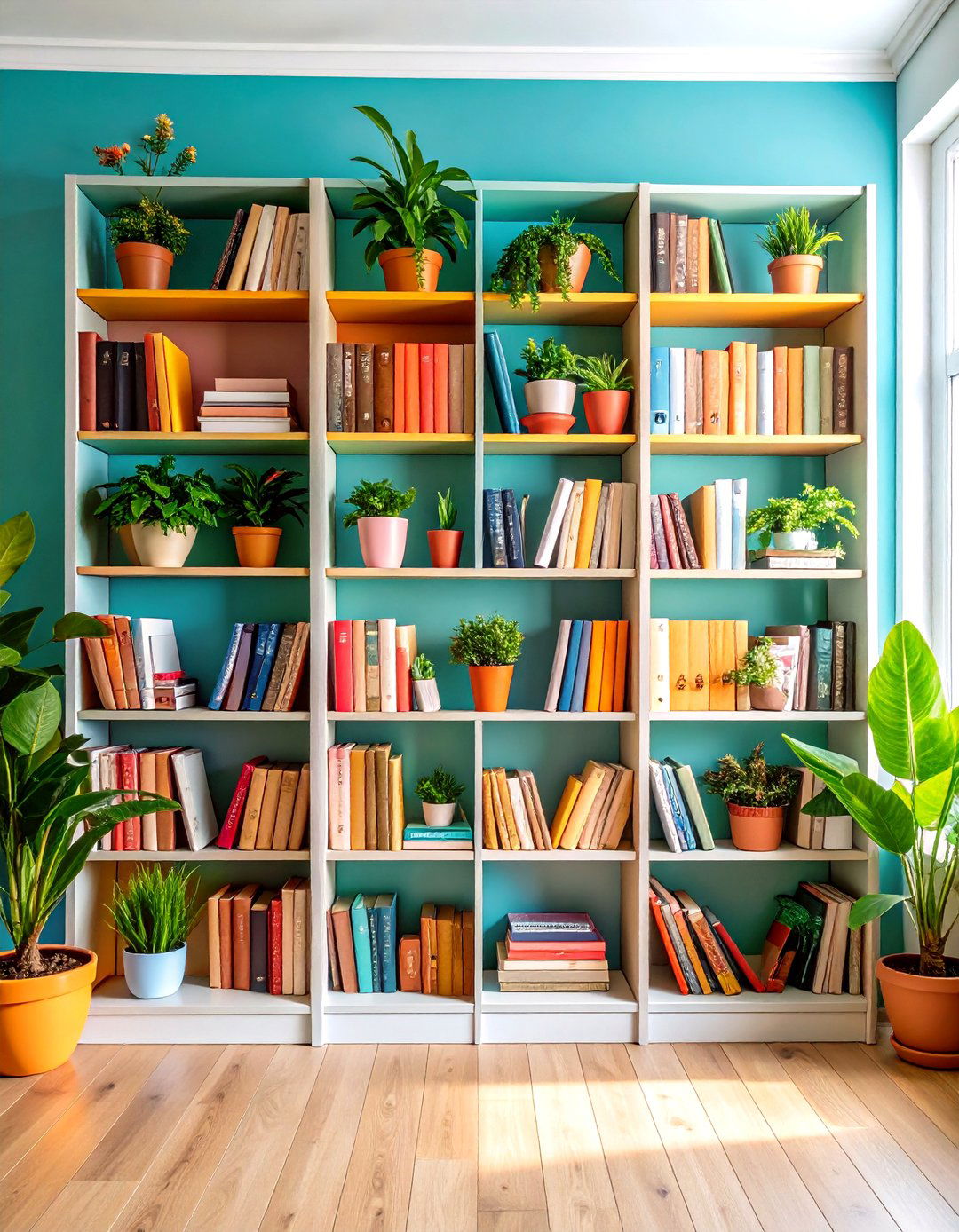
A double-sided bookcase acts as both storage and a visual partition, delineating zones in an open studio without blocking light. Load with books, art objects, or potted plants to create an attractive barrier between living and sleeping areas. Opt for adjustable shelves to accommodate items of varying heights, and consider adding discreet lighting to highlight displayed pieces. This solution enhances organization while preserving the sense of flow crucial in small spaces.
11. Compact Work Desk

A slim, wall-mounted desk provides a dedicated workspace without dominating the room. Look for floating designs with hidden cable management to keep electronics tidy and maintain a clean surface. Pair with an armless chair that tucks completely underneath to conserve elbow room. Above the desk, install a pegboard or slim shelf for essential office supplies, minimizing desktop clutter while maximizing vertical storage.
12. Floating Shelves with Integrated Desk

Combining floating shelves around a recessed desk area creates a cohesive home office that uses wall space efficiently. By suspending storage off the floor, you keep pathways clear and focus attention upward, making the room feel taller. Paint the shelves and wall in a matching tone for a seamless look, or choose contrasting colors to define the workstation visually. This integrated approach is perfect for those who need both display space and work functionality in a small footprint.
13. Convertible Coffee Table
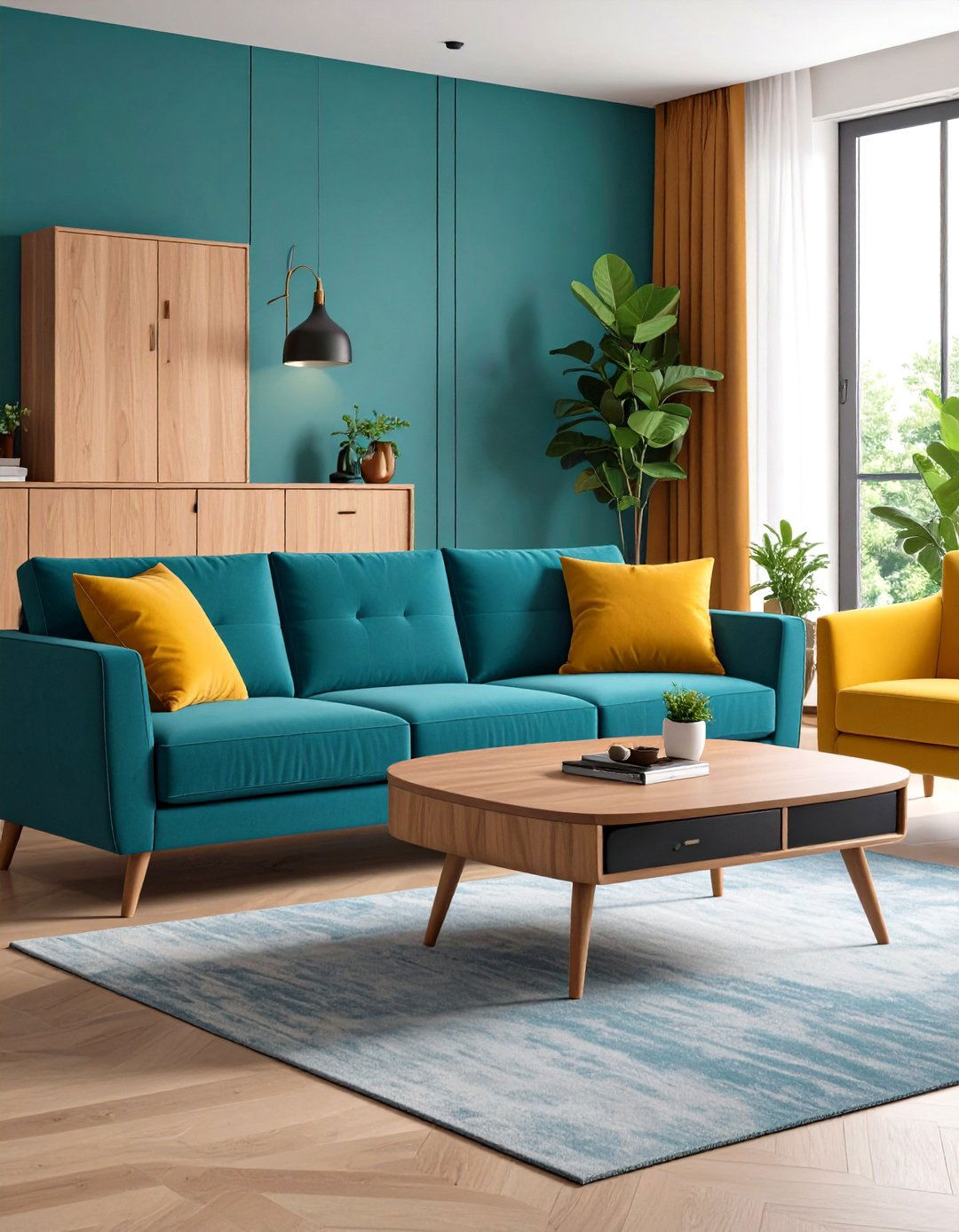
A coffee table with a lift-and-slide top converts into a dining or work surface while revealing hidden storage underneath. This piece eliminates the need for a separate dining table, ideal for minimal footprints. The raised surface aligns with sofa height, creating an ergonomic workstation or eating area. When the top is closed, the table returns to a low-profile accent piece, maintaining the room’s open feel.
14. Wall-Mounted Drop-Leaf Desk
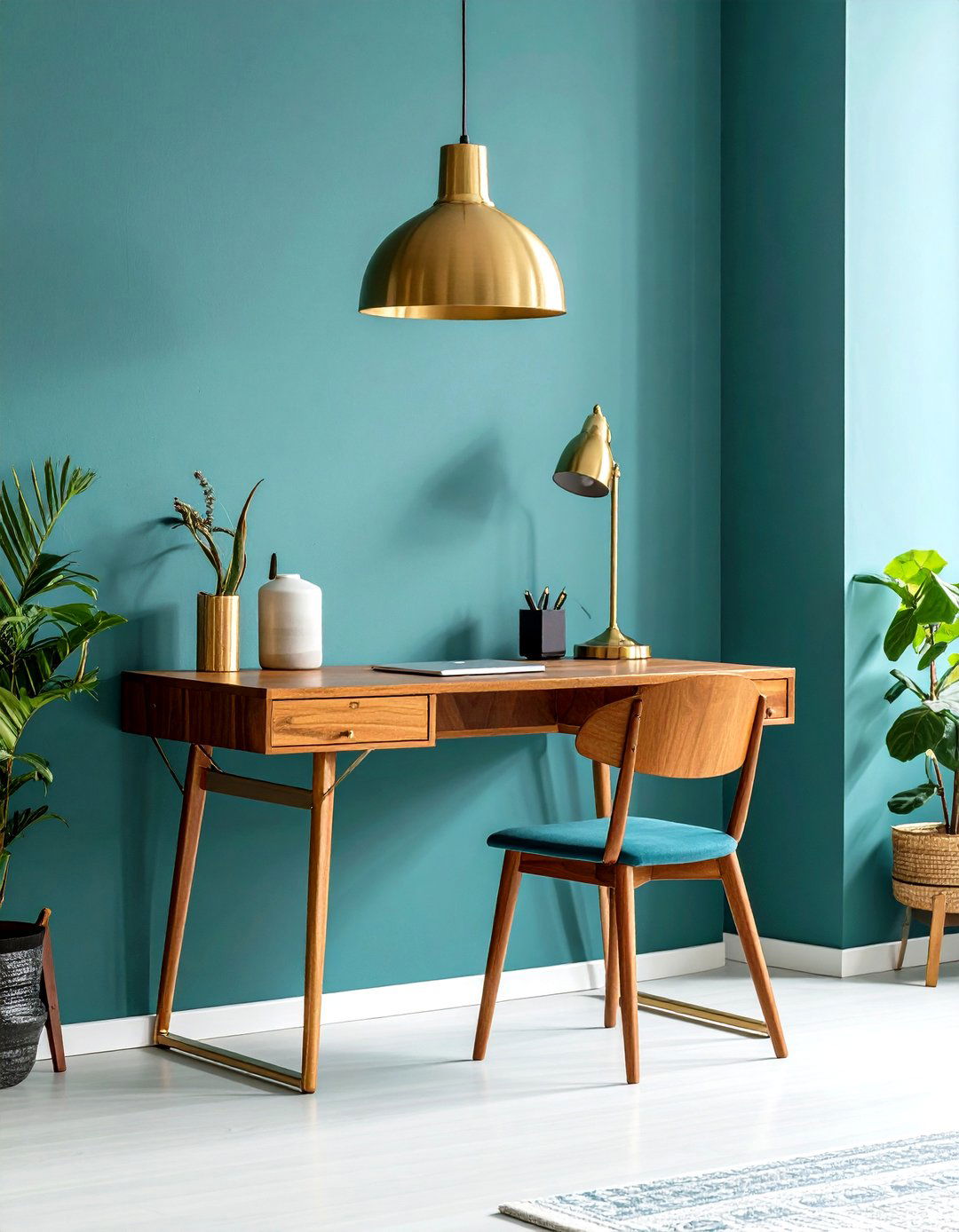
A drop-leaf desk mounted directly to the wall folds down to provide a workspace and folds up flush when not in use. This ultra-compact solution frees floor space and hides work clutter in seconds. Choose hardware in finishes like brass or matte black to add a decorative touch even when the leaf is closed. Combine with a small, folding stool that tucks into a nearby cabinet or closet for an all-in-one workstation.
15. Modular Sectional Sofa

A compact sectional with detachable sections lets you reconfigure seating for movie nights, dinner parties, or solo lounging. Modular pieces can serve as benches, chaise lounges, or standalone chairs, adapting to changing needs. Choose low-arm designs to preserve sightlines, and opt for fabrics that resist wear and stains in high-traffic areas. This flexibility ensures your living area remains functional and welcoming, no matter the occasion.
16. Storage Bed with Drawers
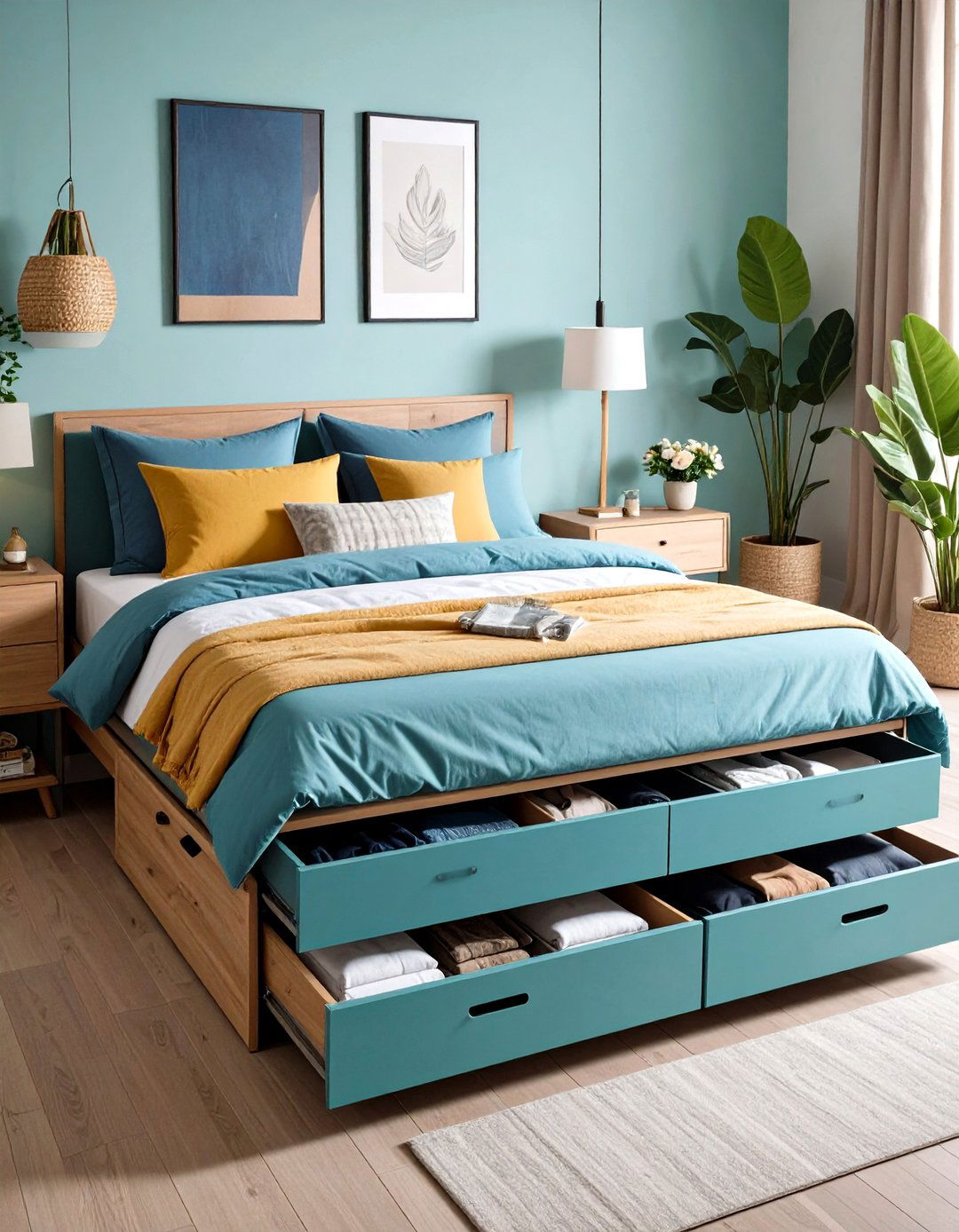
A platform bed with built-in drawers below eliminates the need for a separate dresser, maximizing under-bed space. Deep drawers accommodate clothing, linens, or seasonal items, hiding them out of view yet easily accessible. Opt for soft-close hardware to prevent slamming in tight quarters. By anchoring the bed against a wall, you open up more floor area for movement and additional furnishings.
17. Slim Console Table Behind Sofa
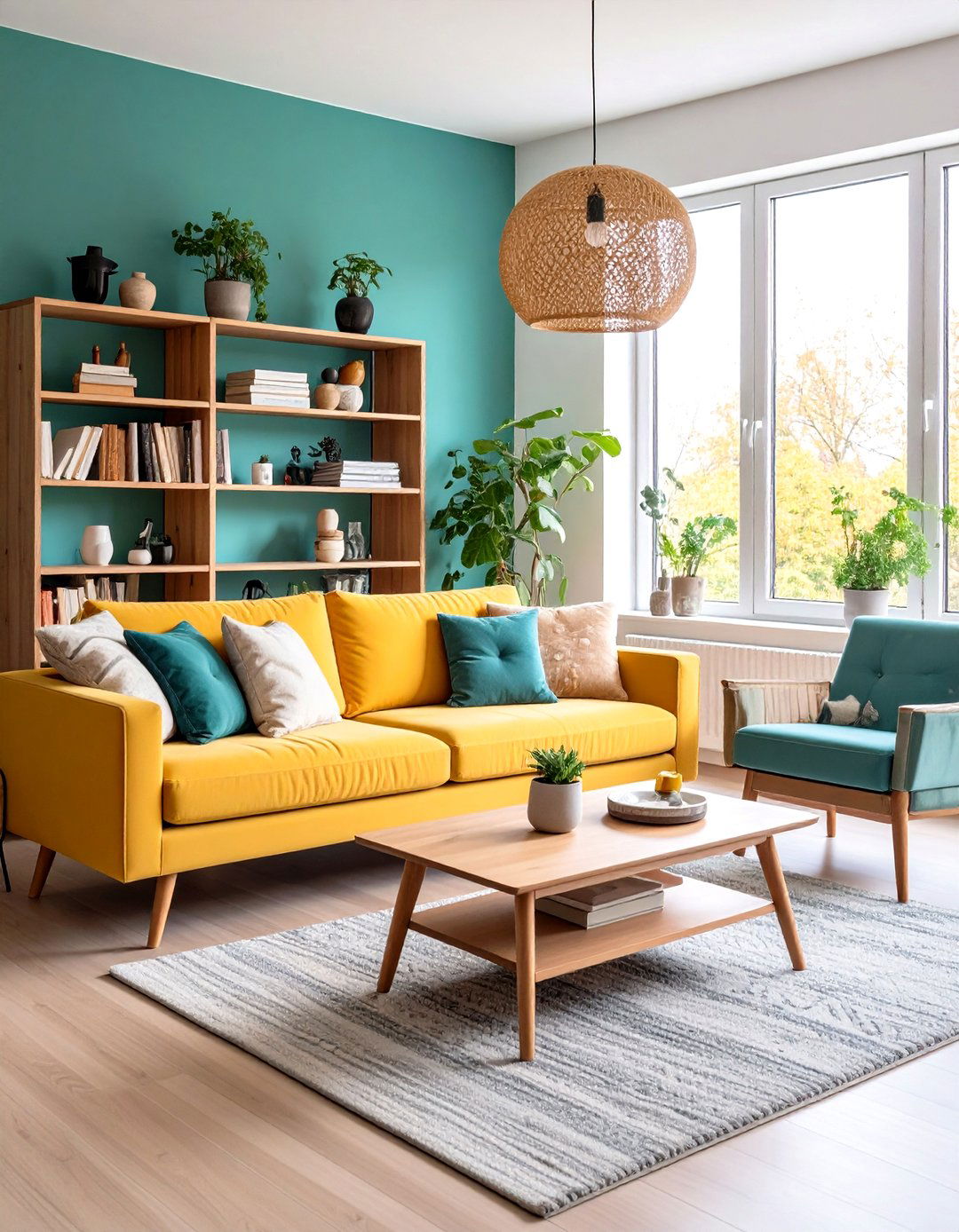
A narrow console table placed at the back of a sofa provides a place for lamps, keys, and decor without taking up much room. This piece creates a visual divider between seating and other zones, subtly defining the living area. Choose models with open lower shelving for baskets or books, adding functional storage without bulk. The elevated surface keeps items at eye level while preserving an open floor plan in the studio.
18. Wall-Mounted Lighting Fixtures

Eliminate floor lamps and maximize walkable space by installing wall sconces or swing-arm lamps next to the bed and sofa. Adjustable arms allow you to direct light for reading or ambient illumination without crowding tabletops. Choose fixtures with built-in USB ports to charge devices at the bedside or desk, consolidating electronics in one spot. This strategy clears floors and surfaces, making cleaning easier and the room feel less congested.
19. Fold-Away Stools and Chairs
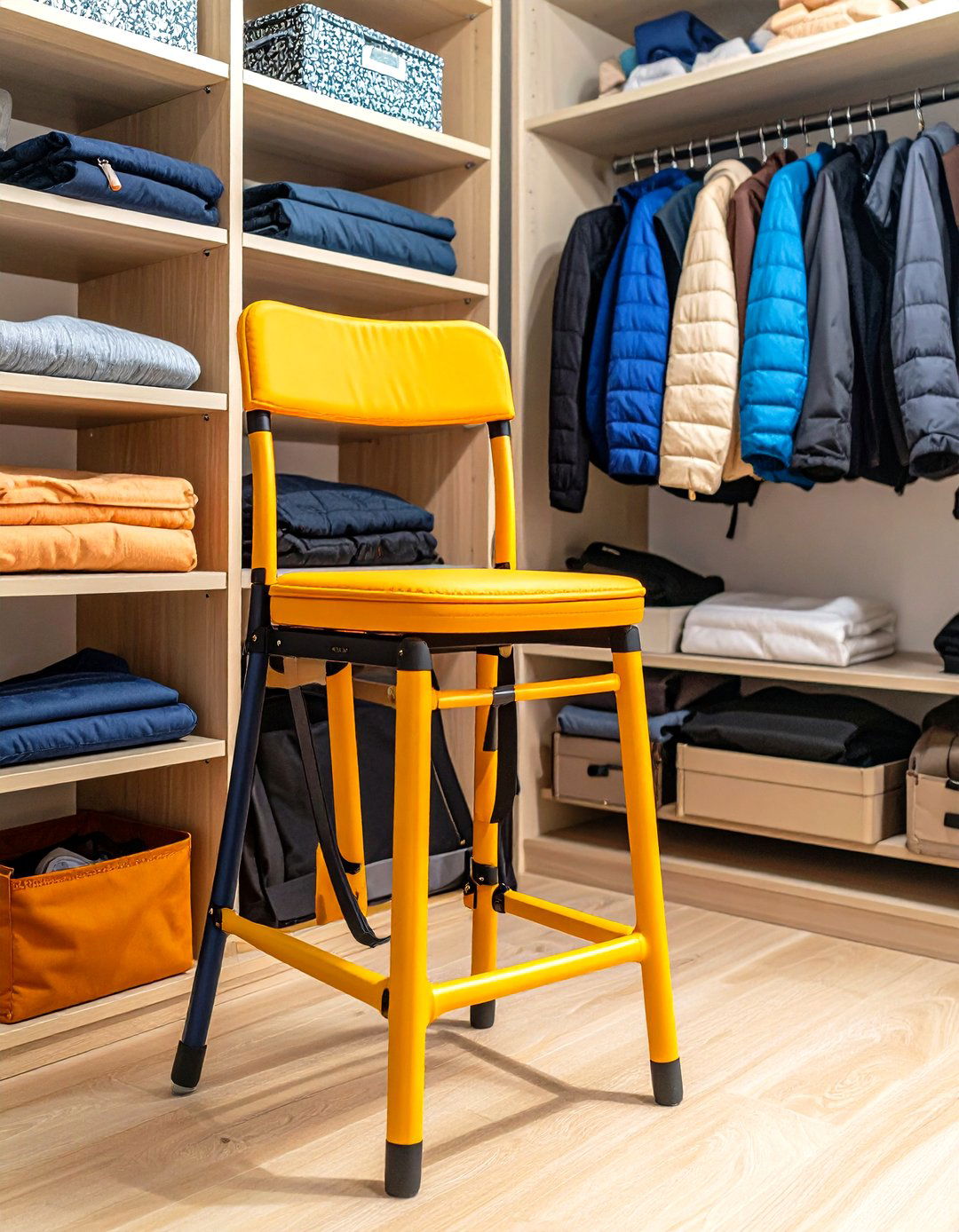
Lightweight stools and folding chairs can be stored in closets or under beds, then pulled out for extra seating when needed. Look for stackable designs that slip into corners or behind doors to stay unobtrusive. Wood or metal frames with fabric seats provide comfort without excessive bulk. This approach ensures you’re always prepared to host guests without permanently sacrificing square footage to spare seating.
20. Integrated Audio and Media Cabinet
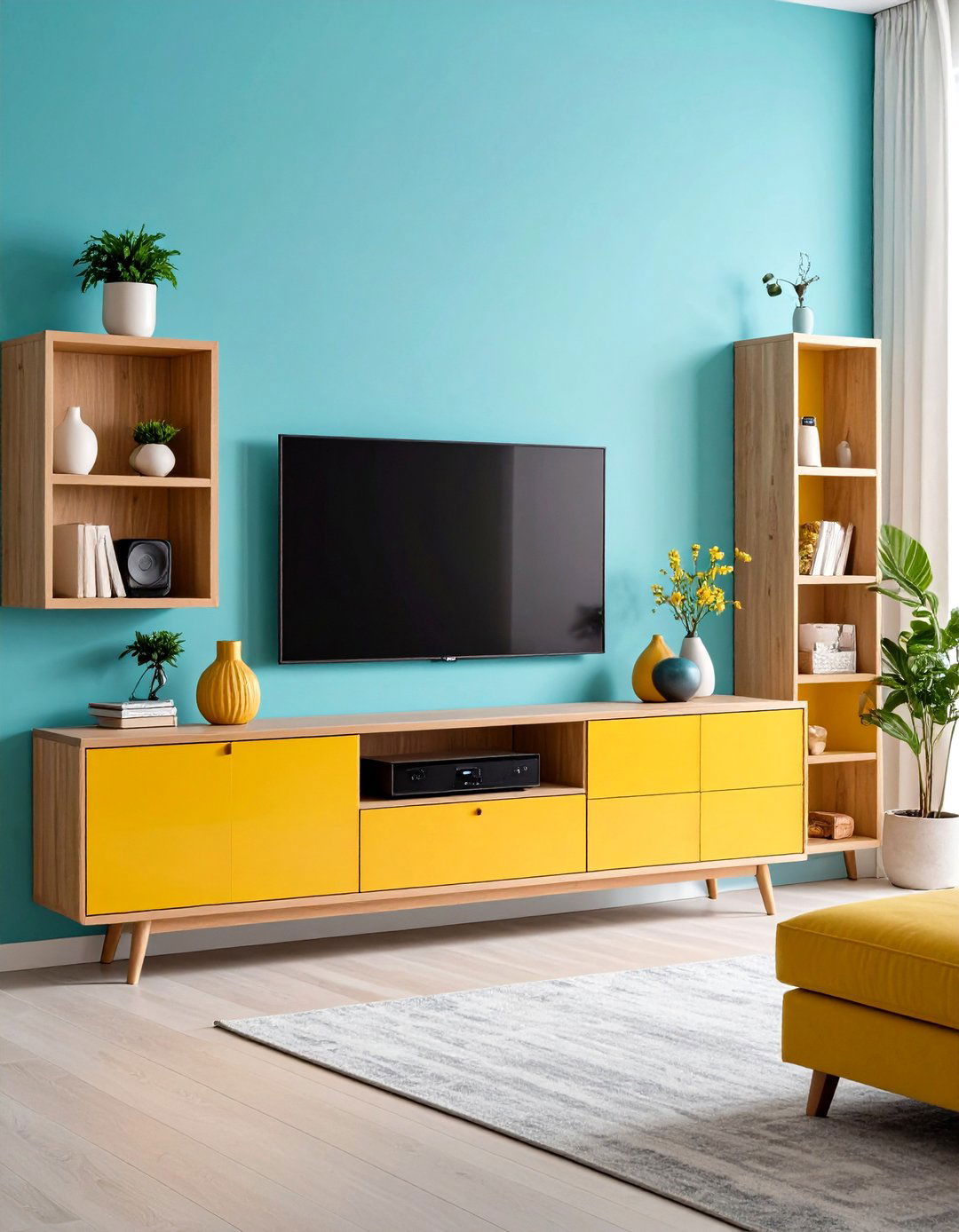
Choose a sleek media cabinet with cable management and built-in shelving for speakers, consoles, and streaming devices. This centralizes entertainment gear, preventing tangled cords and clutter on surfaces. Cabinets with sliding or tambour doors allow you to conceal electronics when not in use, preserving a streamlined aesthetic. Position beneath a wall-mounted TV to anchor the living area without encroaching on valuable floor space.
Conclusion:
By integrating multifunctional, modular, and space-saving furniture, a studio apartment can feel both expansive and intimately styled. From convertible beds and fold-down desks to wall-mounted lighting and slim-profile seating, each piece serves dual purposes to maximize utility without compromising on design. Prioritizing vertical storage, hidden compartments, and adaptable layouts ensures your living area stays organized, flexible, and uniquely reflective of your personal taste—transforming even the smallest studio into a home that’s as practical as it is beautiful.


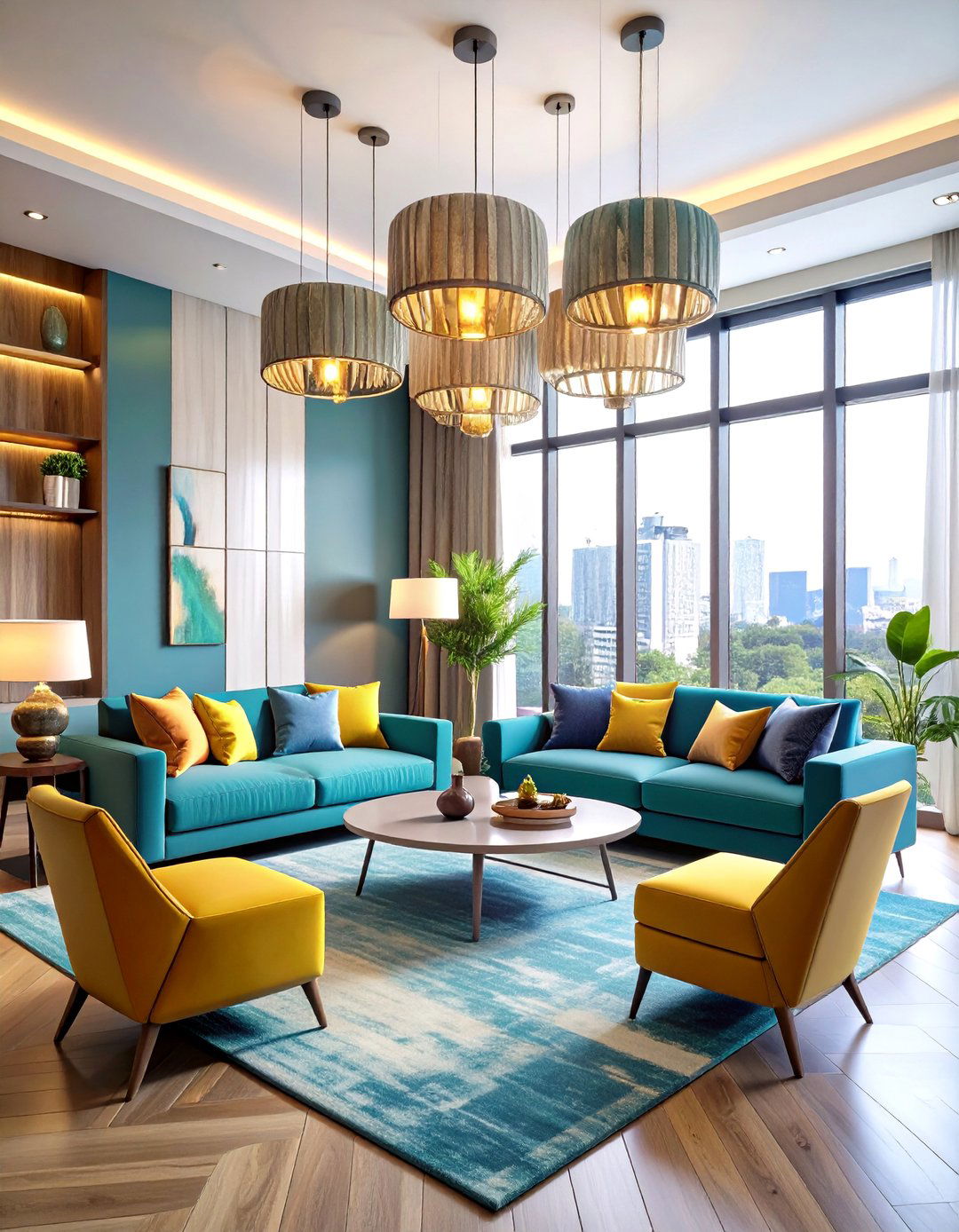
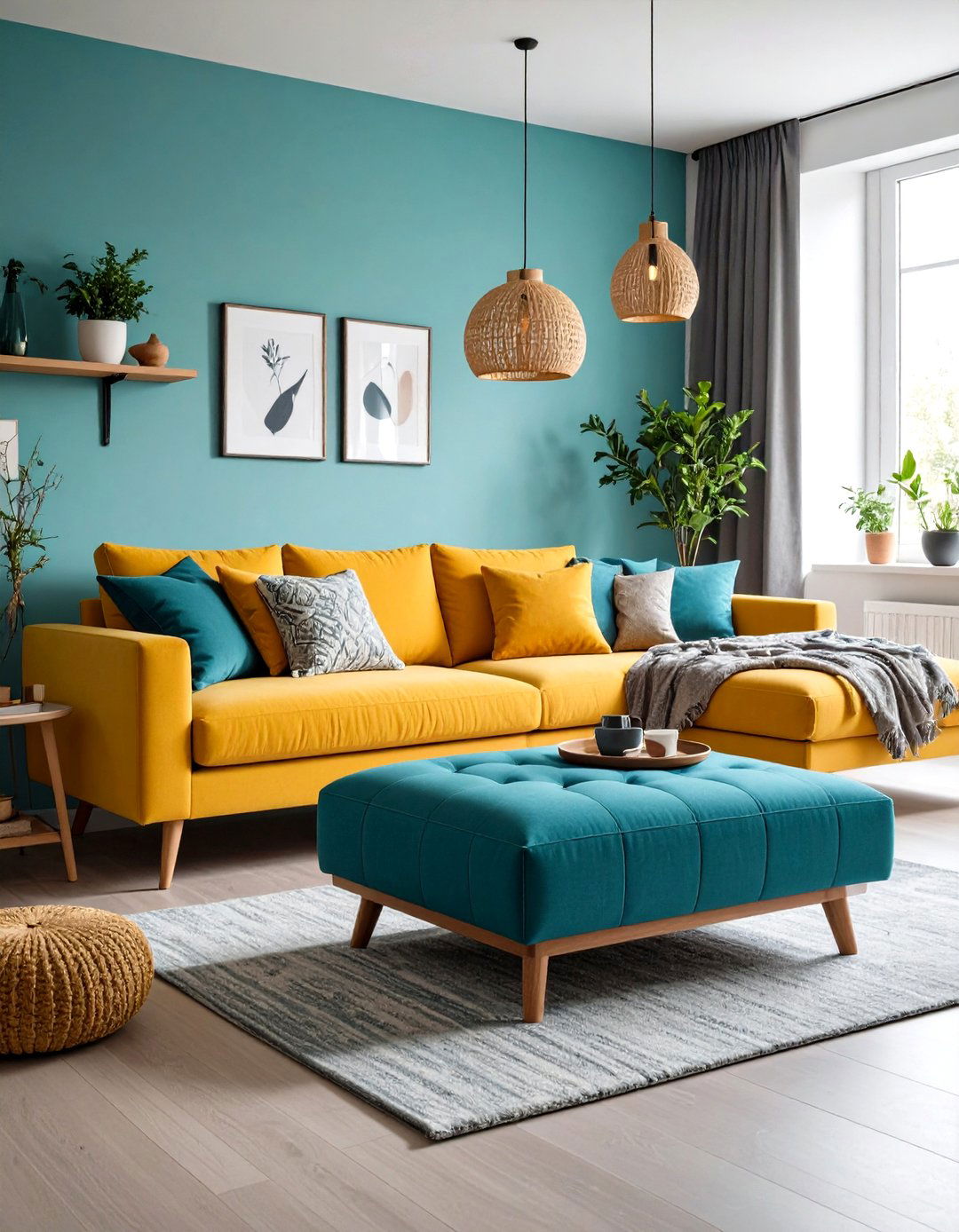

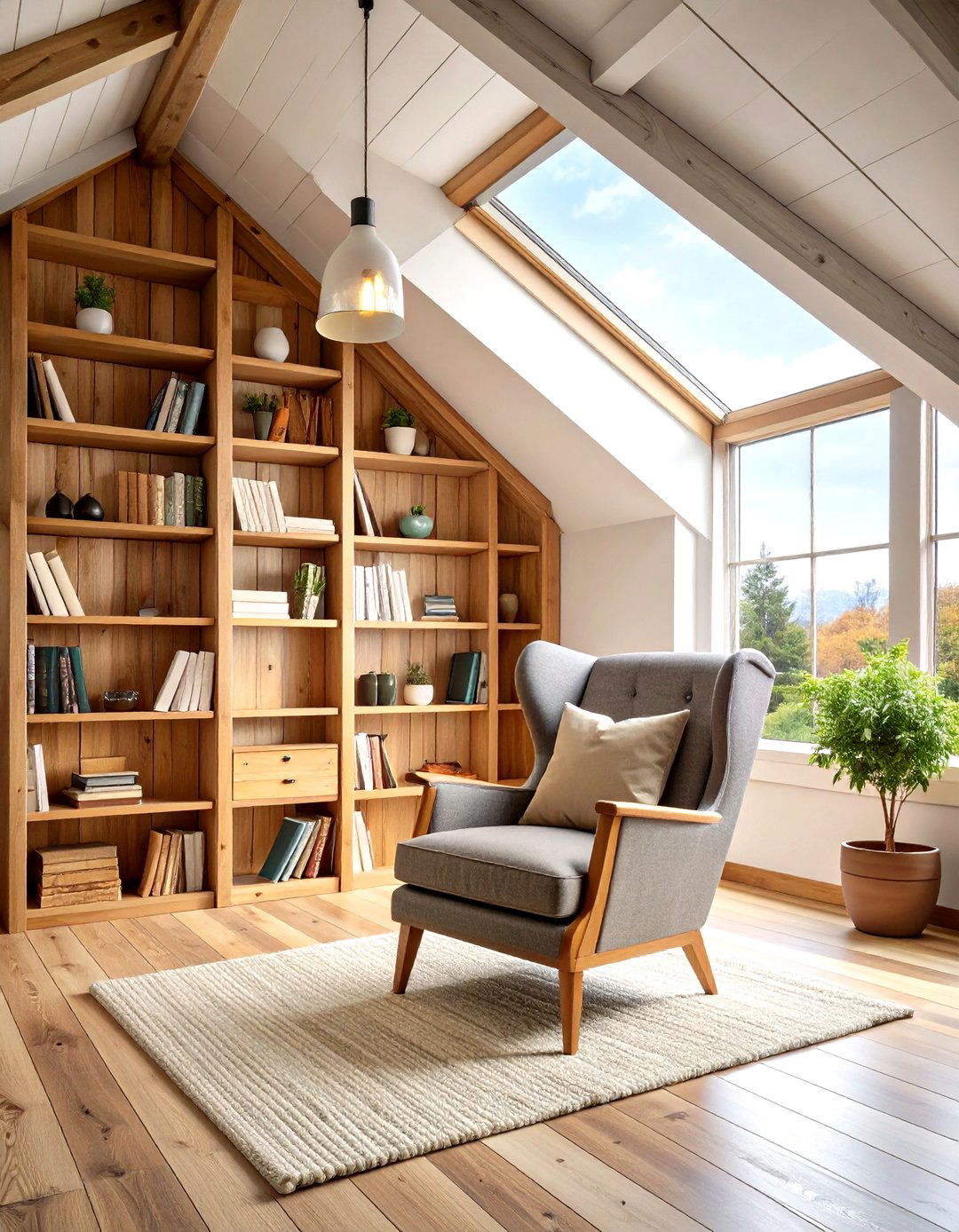
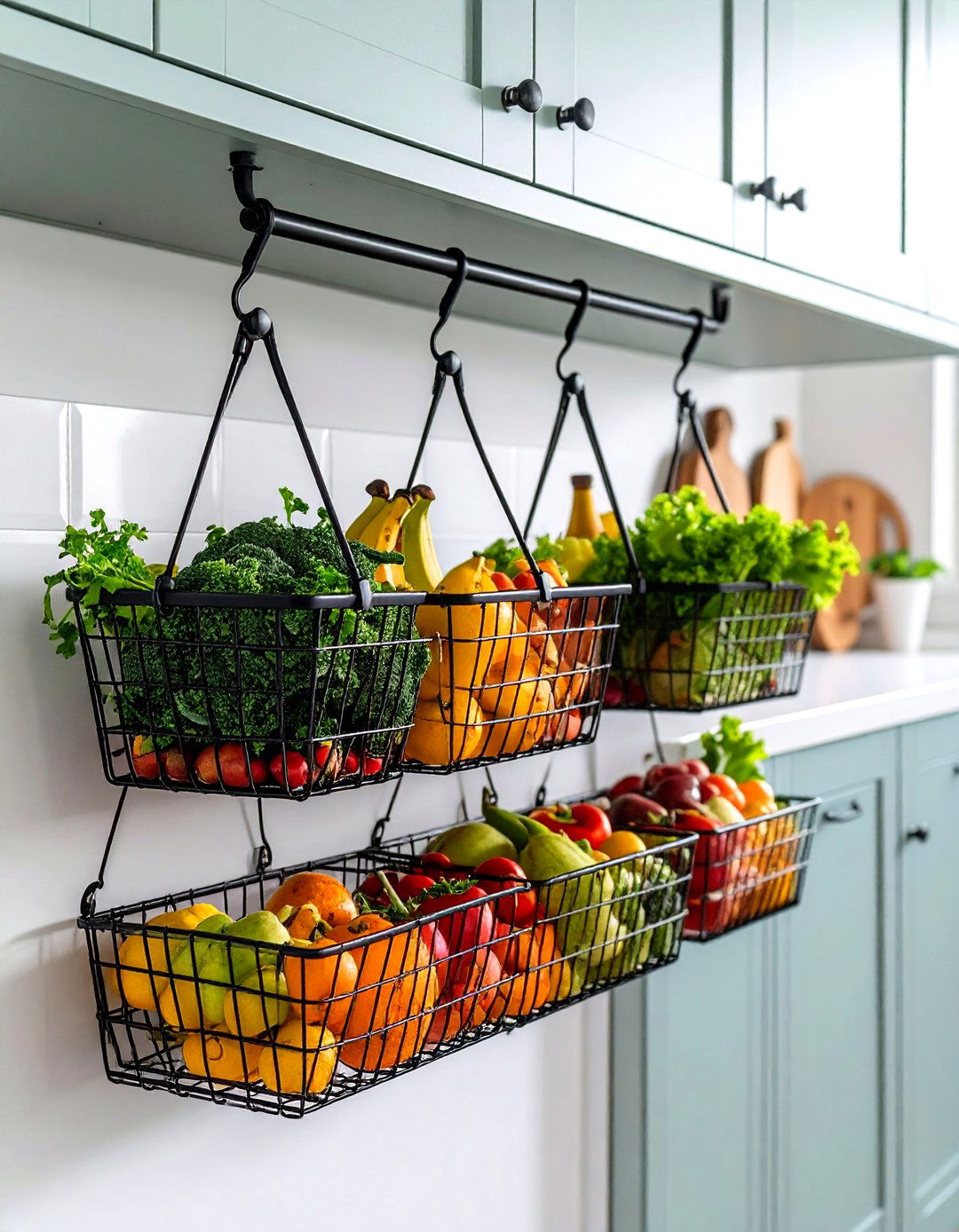
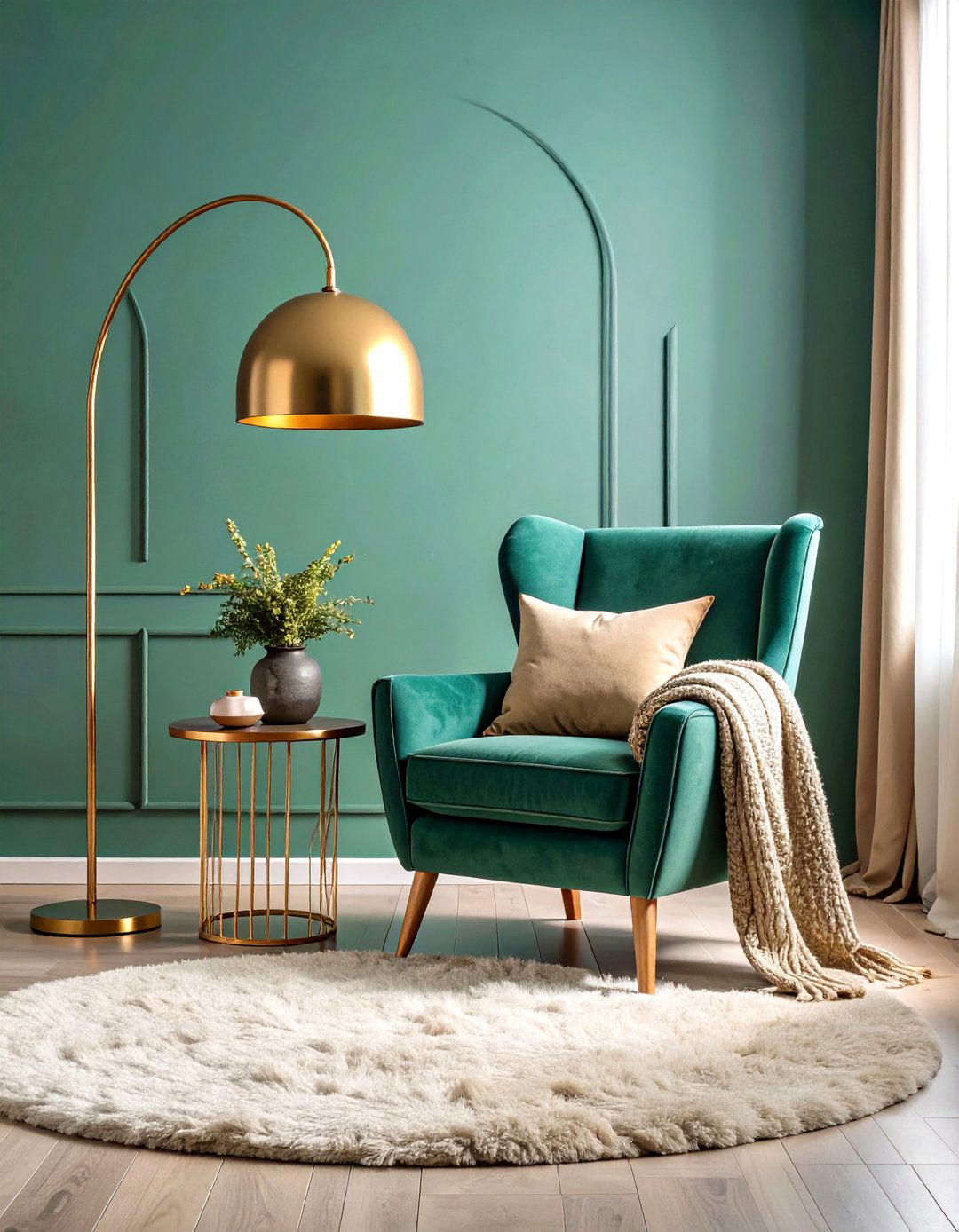

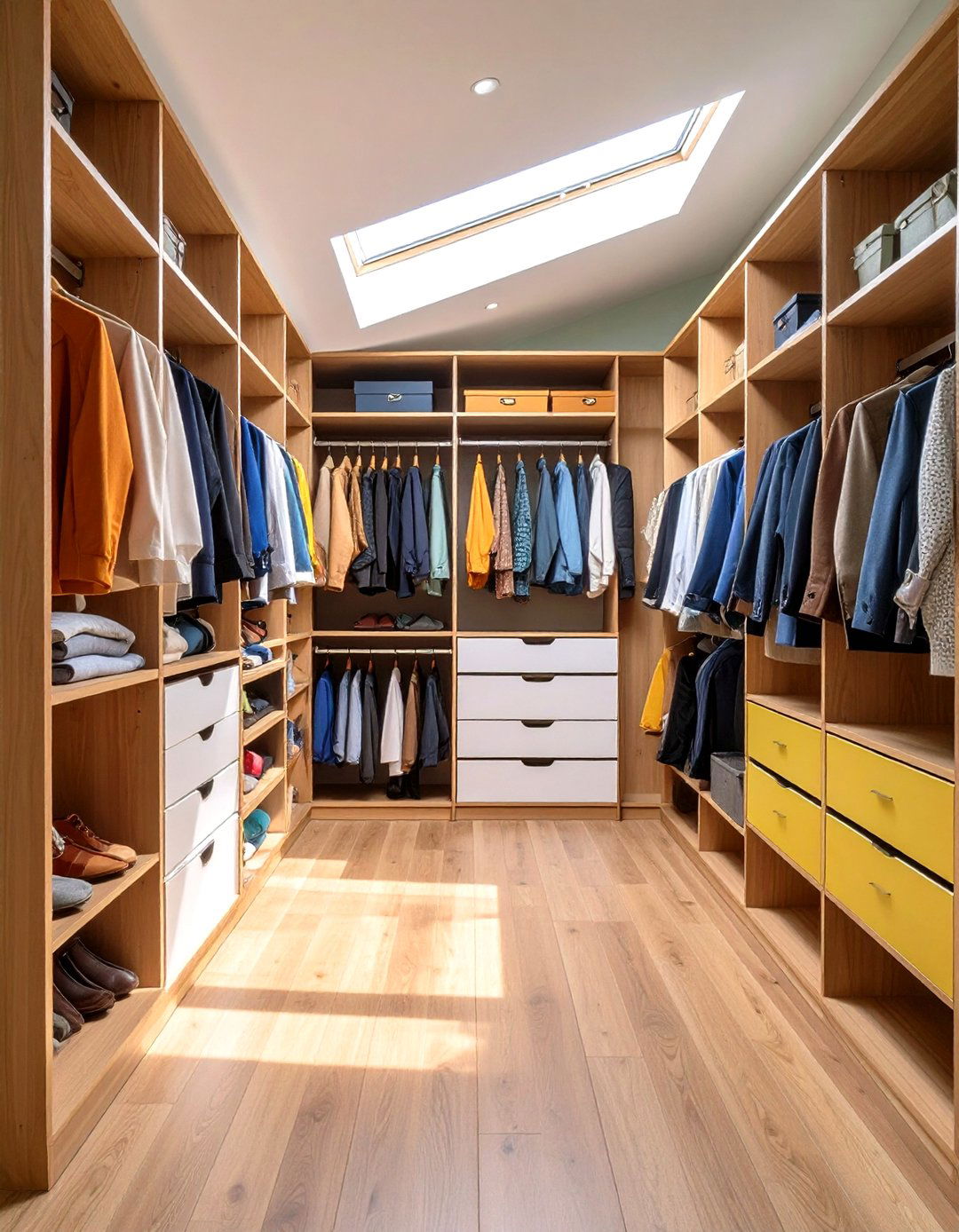
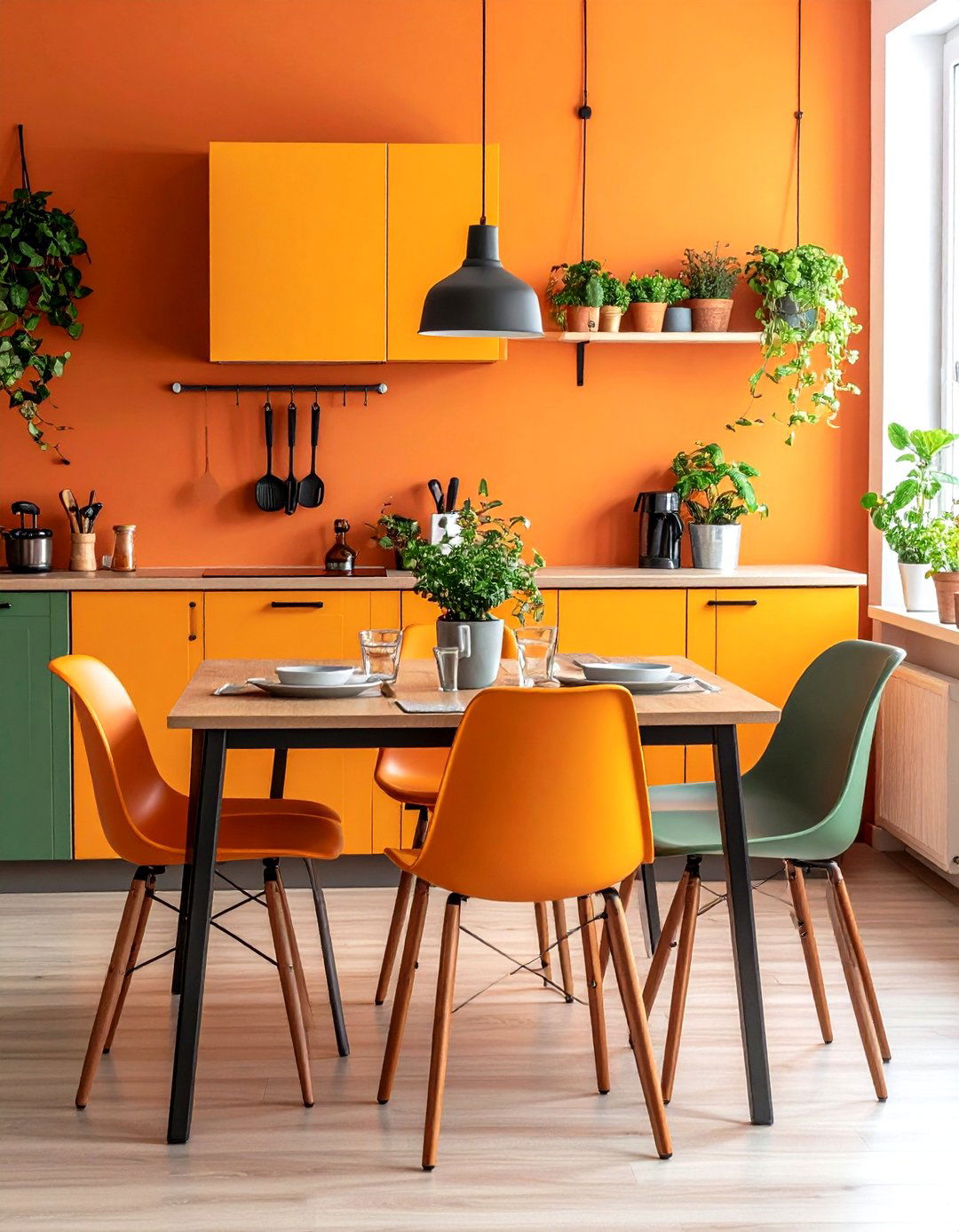
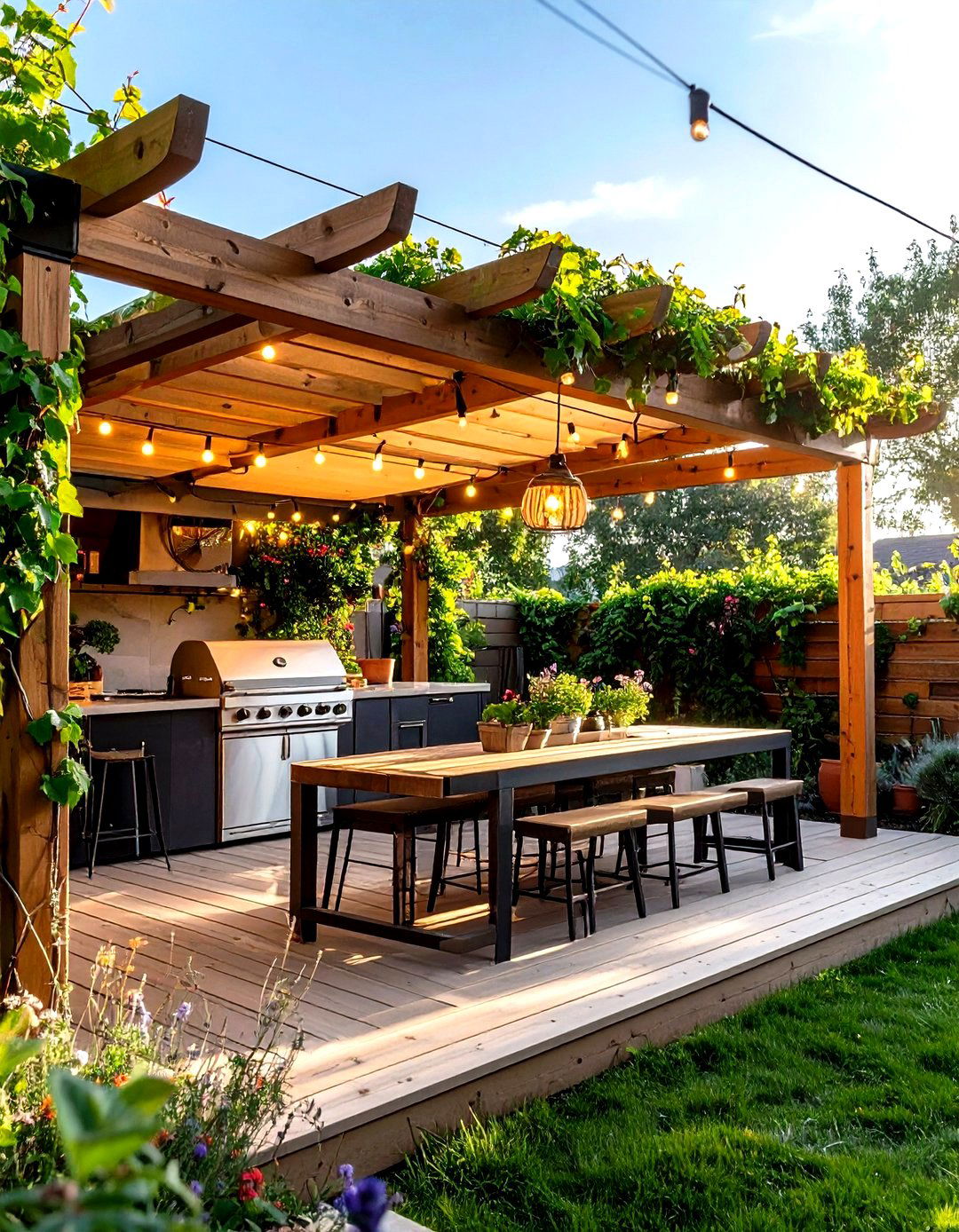
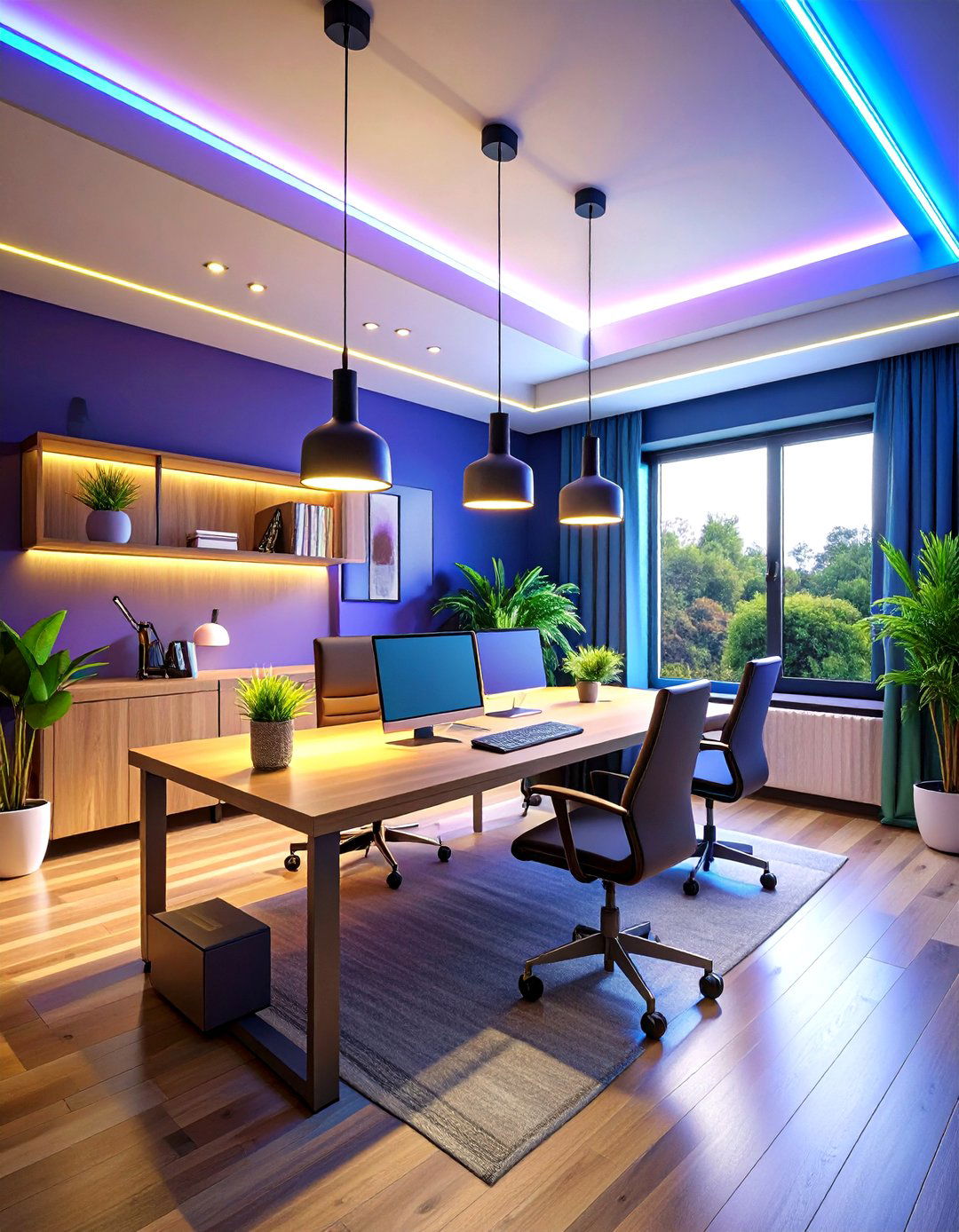
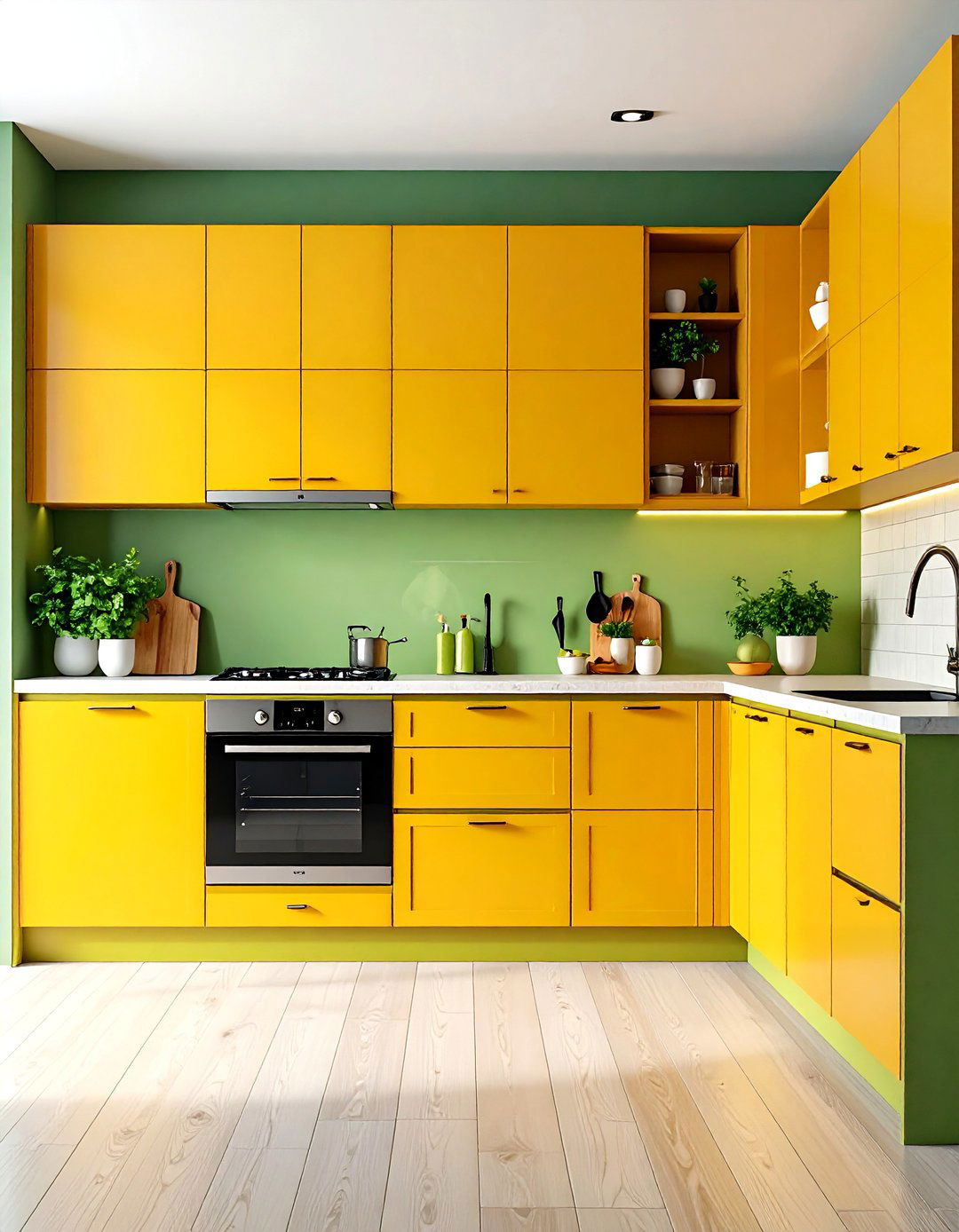

Leave a Reply